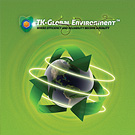TK-ANFHCTS Anti Fire/Heat/Thermal
Cooling Tower Systems
TK-ANFHCTS Anti Fire/Heat/Thermal Cooling Tower Systems
TK-Global Engineering Cooling Tower Systems
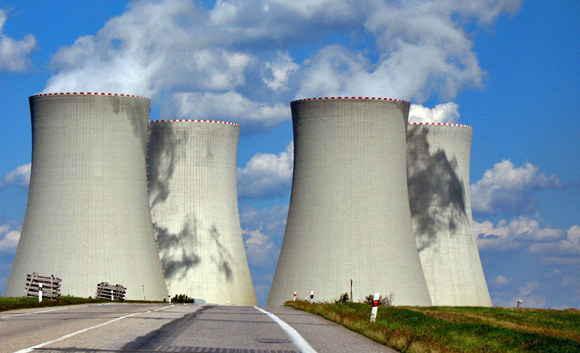
Professionals in all power related industries understand not only the complications and issues but also the paramount importance for the cooling and filtering of heat, fumes and/or gases within all types of industrial plants. In modern technologies cooling has become an essential influence especially within areas such as the production of electrical energy i.e. thermal processes.

Hence the R&D department within Technokontrol has developed several new applications using our own specially designed products and patented technologies.

Process:
The hot cooling water rains down from the top of the Cooling Tower and is distributed horizontally by various distribution layers.

The cooling air falls on the bottom of the Cooling Tower and returns up to the very top of the Cooling Tower and in this continuous manner the air is heated and the water is cooled down.

In the distribution layers there are distribution units made out of plastic material which have a large distribution surface. The heat transfer capacity of plastic is low (under 1 Watt/m.k2). The cooling of the hot water distributed on the top of the first distribution layer is done via vaporization until the air is saturated and by direct heat transfer between surfaces of the water to the surface of the air.

In some regions especially in the tropics the "Air" which is used in the cooling process contains a large number of impurities like organic seeds and pollen. These impurities stick to the surface of the distribution layers. With the temperature in the middle layers and the humidity they start to sprout and form an organic layer on top of the distribution layers.
Gradually the efficiency of cooling system starts to be reduced as the air velocity increases or the air capacity is reduced. This is caused due to having less capacity as a result of the impurities reducing in volume.

In this case the operator has to clean the layers of waste, debris or impurities which have become part of the cooling system. This organic layer reduces the available cooling air capacity where the cooling air has to pass through. A reduction of the efficiency of cooling increases the cool water temperature on the bottom and reduces the energy output of the plant. (In humans this would be like having cholesterol in the blood stream and Technokontrol avoiding the problem from the very start).

Technokontrol Cooling Systems will avoid these above mentioned issues and will allow the plant to work in a much more efficiently manner thus reducing waste inputted fuel and increasing the net energy output.

The heat transfer capacity of Technokontrol Cooling Systems is extremely high (202 Watt/m.k2). This effect gives a third component of heat transfer.

The cooling of the hot water distributed on top of the first distribution layer is done by:
- Vaporization until the air is saturated
- By direct heat transfer between surface of the water and surface of the air
- By direct heat transfer of the metallic surface of the distribution layer to the air

The specialist alloy formulations in distributed layers are supported on a substructure system which is isolated against the cooling tower walls. In doing so, a low electric charge is kept in the distribution layer.

The polished surface of the distribution layers together with the low electric charge secure that seeds and pollen would not stick to the surface and even if they did stick they would not sprout as would be the case without the use of Technokontrol Cooling Tower Systems.

Therefore there will be no reduction of the area where the cooling air goes through, the efficiency of cooling remains constant and no maintenance is required.

The efficiency of cooling depends to a very large extent on the local conditions (humidity, air temperature, impurities in air etc.) and on the specific requirements of the power plant. To reach the best possible results by application of the Technokontrol Cooling system in existing Cooling Towers it is therefore absolutely necessary to make a complete independent Test Program.

The size of the test unit and the instrumentation is necessary so that the data received can be compared with the larger unit, thus creating a test trial to calculate the comparison between the two and adapting the technology directly to the needs of the tower cooling systems.

Aim of the Test Program
The aim of the test Program which will be executed by the above apparatus is to determine design parameters, form of the distribution network, amount of water and temperature, velocity of the cooling air and cooling air temperature for existing cooling towers. To obtain the necessary parameters for the apparatus a series of tests have to be made and the respective data fixed in curves.

Technokontrol Chimney Filtering Systems
Technokontrol Chimney Filtering Systems has also developed the technology and products not only to increasing output in cooling systems for example, but also to create a filter system in which we can filter all types of fumes, vapors and gases which are contaminating or non contaminating to the environment thus reducing CO2, CO, NOX, SO3, SO4 and other contaminating materials.

The most important issue in today´s “Pro-Environmental World” is not only how to reduce contaminating industries but also how to retain these contaminated materials and to environmentally deal with them in a more ecologically friendly manner.

In today´s world, the operators of the respective energy plants not only have to deal with ever increasingly stringent contaminating regulations, but via the use of our Technokontrol Chimney Filtering system they will also learn that it can be financially rewarding to be more efficient and less contaminating.

Our specially enhanced Technokontrol Chimney Filtering systems also offer the opportunity to re-use and recycle these contaminating materials. As after they have been filtered out they do not enter the environment thus providing the possibility to reduce the plants carbon footprint and in doing so, produce a carbon credit. Another benefit is that as these materials are reusable, they can be used again to increase production, hence they do not need to be repurchased and in certain cases be even more environmentally friendly.

Thus via incorporating our Chimney´s Filtering system into the above factories, the factories will not only be more compliant to the ever increasing environmental regulations but they also will be a more responsible operator to both present and future clients. Therefore, they will be able to apply for more government and financial benefits and probably more importantly, they will be in good standing with corporate governance of the corporation.

As per above, due to the requirements of each client being different we at Technokontrol will need to design a complete study and custom built application process specially tailored to that respective client. This will include building procedures so as to satisfy the needs and viability of the investment.

TK-Global Environment
R&D Products
- Cooling Towers
- Heat Resistant Clothing
- Solar Heating
- Chimney Filtering System
- TK-Global Engineering
- TK-Global Electronics
- TK-Global Environment
- TK-Emergency Call Center
TechnoKontrol Wikipedia

TechnoKontrol: 1st in Spain for own Technology patents 2013 & 2014

- Ministerio de Industria Turismo y Comercio-OEPM
Technokontrol, the number 1 corporation in Spain filing for its own technology patents, trademarks and utility patents (SPA) - OEPM 2013 The year in numbers (SPA)
TechnoKontrol has been fully verified and certified by Bureau Veritas
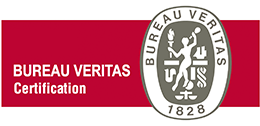
Certificates
- ISO 9001 - ES108784-1
- ISO 14001 - ES108782-1
- ISO 45001 - ES108783-1
- ISO 4126
- ISO 28000
- ISO 37000
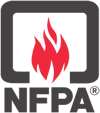
NFPA-National Fire Protection Association
NFPA-Asociación Nacional de Protección contra el fuego
TechnoKontrol is a member of the NFPA
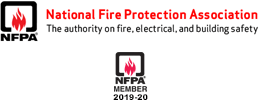
NFPA 69: Standard on Explosion Prevention Systems, 2016 Edition
Prevent deflagration explosions due to combustible dust particles, gases or vapors with NFPA 69. Combustible dust, gases and vapors produced in industrial settings can pose a significant safety hazard.NFPA 69: Standard on Explosion Prevention Systems offers definitive guidance on explosion protection and prevention systems.
ATEX - European Antiexplosive Safety Directives

- ATEX Guide: Protection in explosive atmospheres
- ATEX-EU/HAZLOZ-USA/NFPA-USA/DSEAR-UK/Explosion Directives TechnoKontrol Additional Anti-Explosion Data
- ATEX Directive in EU Directives
Dangerous Substances and Explosive Atmospheres Regulations - United Kingdom/ATEX

United Nations Economic Commission for Europe - UNECE - TechnoKontrol

- TechnoKontrol information for the UNECE BLEVE working group
Proposal transmitted by the governments of Spain and France
The European Parliament and The Council

Technokontrol's Products & Services are insured by

TK-Global Engineering - Where efficiency and reliability become a reality


More info
Should you want to receive more information, please contact us.
Documentation
- New Energy Economy
- Major Hazards with C02
- Energy Developments
- Emerging Energies
- Sub-sectoral Environmental Guidelines Petrol/Gasoline Retailing
- Directive 2001/81/EC of the European Parliament and of the Council of 23 October 2001
- Institute of Petroleum - Guidelines for Soil, Groundwater and Surface Water Protection & Vapours Emissions
- Directiva 2009/31/CE del Parlamento Europeo 2009
- Medio ambiente Real Decreto 455/2012, de 5 de marzo, por el que se establecen las medidas destinadas a reducir la cantidad de vapores de gasolina emitidos a la atmósfera durante el repostaje de los vehículos de motor en las estaciones de servicio
- Reducing the evaporation of stored Iraqi crude oil
Evaporation losses for covered with surfactant, covered with polymer, and uncovered surface of blend crude oil were (0.45%) at 24 °C for 96 hours evaporation time
- Evaporation Loss Measurement from Storage Tanks
- Estimation of the Petrochemical Evaporation Loss from Fixed Roof Storage Tanks
Regarding the crude oil, the working loss is about 75% of all other organic liquids under same conditions
